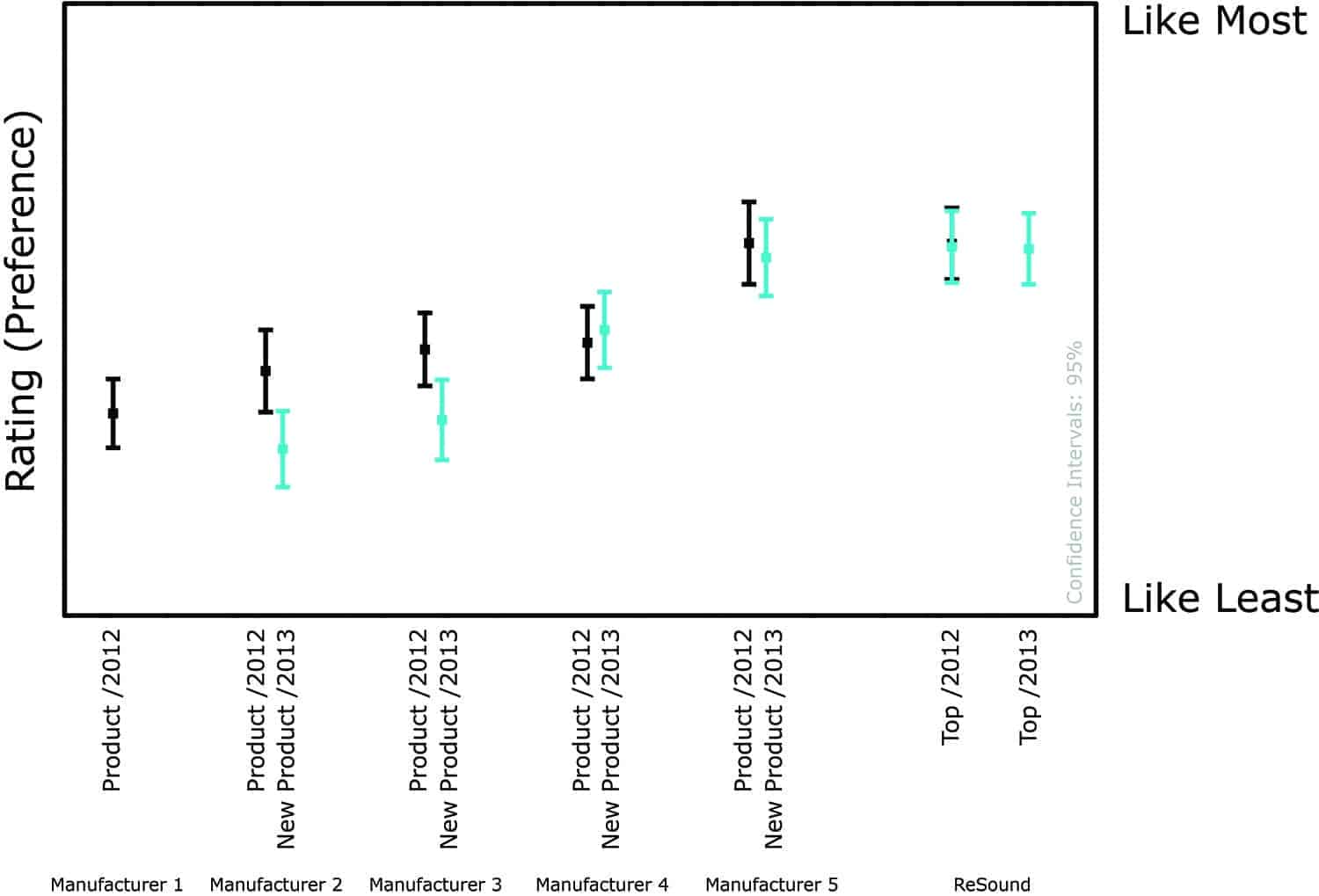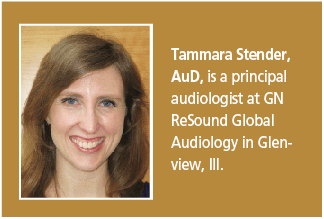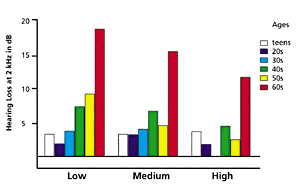Tech Topic | November 2014 Hearing Review
By Tammara Stender, AuD
Hearing instruments have made a splash in the media this year, due to the new ability of some models to connect directly to user devices such as iPhones. However, it is important to remember that these innovative ear-worn electronics are designed primarily for one purpose: to improve the hearing experience for people with hearing loss.
In the midst of the excitement about how certain hearing instruments can connect directly with a user’s Apple device, it may be easy to lose sight of the real reason for the product: to provide better hearing benefits for individuals with hearing loss.
ReSound LiNX offers direct connectivity to the iPhone, iPad, and iPod touch. While this increases the usability and functionality of the hearing instruments, it goes much further by offering a full range of features currently available from ReSound. In addition to the current technology of Surround Sound by ReSound, two new features were added: Sound Shaper and Synchronized Acceptance Manager.
Sound Shaper is a new frequency lowering approach that improves high frequency audibility, with minimal degradation to sound quality. Synchronized Acceptance Manager incorporates device-to-device communication to achieve optimal amplification without sacrificing user comfort at the fitting.
The hearing instruments were also redesigned to offer better cosmetic benefits in a micro-RIE device. Additionally, a new ultra-power receiver and more fitting options for people with severe hearing loss were introduced to allow for fitting ReSound LiNX to a wider range of patients.
More Than Connectivity
Surround Sound by ReSound is a technology package that has been a common thread through the past few hearing instrument launches. It is rooted in the endeavor to provide the most natural hearing experience possible through hearing instrument amplification, and built around four goals:
- To accurately model the incoming signal;
- To clean the output signal of extraneous noise;
- To balance the directional response for the listening situation and for the individual; and
- To stabilize the output signal, preventing feedback and artifacts.
Although these themes have not changed, many of the features that comprise Surround Sound by ReSound have been added, improved upon, and validated through proof-of-benefit testing with each product introduction. In addition, the ReSound LiNX continues to offer 2.4 GHz wireless connectivity to all Unite accessories, as well as device-to-device communication between hearing instruments in a fitted pair.
Uncompromised Sound Quality
Production of a high-fidelity output signal through a sound processor is possible only when the input signal is accurately and precisely modeled for human hearing. Thus, the modeling component of ReSound technology was designed to preserve the temporal characteristics of the input signal while restoring non-linearity through proprietary WARP processing and wide dynamic range compression (WDRC). This system maps frequencies logarithmically, with smoothly overlapping frequency bands that are based on critical auditory bandwidths1 and the auditory Bark scale.2 (A white paper about ReSound WARP compression is available online at www.resound.com in the Downloads Library.)
A good, balanced sound reproduction is one that adapts to the ever-changing directional needs of the user as new listening environments are encountered throughout the day. One of the premier directionality options afforded by current ReSound 9-level products is Binaural Directionality. This feature works through 2.4 GHz wireless transmission of data between hearing instruments in a binaurally fitted pair to optimize the microphone responses for the listening environment. Through the Environmental Classifier, the hearing instrument user may automatically receive one of four possible binaural microphone responses: bilateral omnidirectional, bilateral directional, or asymmetric directional to either the right or left side, with one hearing instrument providing a directional response and the other providing an omnidirectional response. The switching parameters of Binaural Directionality were based on published research about user preferences in different environments,3,4 speech intelligibility in noise,5-10 and ease of listening.6 The benefits of this feature are that the user does not need to manually change programs to achieve an optimal response for the listening environment.
The speech-in-noise benefits of this binaural feature, as compared to previous versions of ReSound asymmetric directional technology, were proven in an internal study available online (Stender, Kirkwood, and Jespersen, white paper, “Proven benefits of Resound Binaural Directionality”; 2013).Users achieved better speech intelligibility scores with Binaural Directionality, as compared to standard asymmetric directionality, in noisy listening environments where the speech was to one side or speech was directly in front of the listener. Although standard asymmetric directionality is a good solution for many listening environments, this testing proved additional benefits of Binaural Directionality in more environments.
Binaural Environmental Optimizer II is a feature designed to apply gain and noise reduction changes seamlessly according to the listening environment. It also was improved upon previous versions by use of device-to-device 2.4 GHz wireless transmission, with the benefits being a synchronized symmetrical response for both hearing instruments.
ReSound NoiseTracker II is incorporated into Binaural Environmental Optimizer II, and is unique in that it reduces multiple types of real-world noise, including speech babble. Further, internal testing has shown that activation times for the noise reduction are very quick, and the amount of noise reduction is accurate to the level it is set in the fitting software across the entire frequency range.

[Click on images to enlarge.] Figure 1. ReSound products were top-rated by an independent investigation of hearing aid sound quality at DELTA SenseLab.
New Features
In addition to the full scope of Surround Sound by ReSound features, two new features were introduced with ReSound LiNX: Sound Shaper and Synchronized Acceptance Manager. While each feature has different goals, they are both optional tools that were designed to aid professionals in meeting the needs of their individual patients.
Sound Shaper is a proportional frequency compression strategy designed to provide maximal listening benefits while minimizing the signal distortion that is inherently present in all frequency lowering techniques. When the needs of the patient cannot be met through traditional amplification, Sound Shaper provides an alternative to enhance audibility for patients with dead regions or sloping hearing losses. A recent article12 discusses the development of this feature, plus considerations for when and how to apply it for individual patients.

Figure 2. Synchronized Acceptance Manager gradually increases gain over time to achieve desired target settings.
Synchronized Acceptance Manager is a feature that helps resolve the dilemma between fitting comfort and optimal settings for speech intelligibility benefits. This feature may be especially useful for new users who are acclimating to newly fitted amplification, as it gradually increases the gains over wear time from a “Comfort User” or “First-Time User” level to an “Experienced User” or a fine-tuned setting (Figure 2).
The benefit of this feature is that new users will experience lower gain levels initially, and then, as the acclimatization process occurs, they will eventually enjoy the validated speech intelligibility benefits determined by the fitting target rule for their specific hearing losses.
The adaptation time can be altered in Aventa fitting software, for a duration period of 1 week to 6 months. Synchronized Acceptance Manager can be used with the ReSound proprietary fitting target rule, Audiogram+, or with any other fitting target rule such as NAL-NL2 or DSLv5. The “Synchronized” component of the feature ensures that, if a hearing instrument in a fitted pair is lost or not worn, the other hearing instrument will not progress more than 10% further than the unworn instrument. This synchronization is made possible by the robust 2.4 GHz device-to-device communication between the hearing instruments.
Smaller Hardware for Fitting More Severe Hearing Losses
ReSound LiNX is currently available in the micro-RIE and BTE models. However, even the micro-RIE hearing instrument is capable of handling some of the most severe hearing losses through both feature introductions, such as Sound Shaper, as well as new coupling and fitting options. The hearing instrument uses a 312 battery, and is available with a selection of 4 receivers: S, NP, HP, and the new ultra-power (UP) receiver. This custom receiver allows for a fitting range extending beyond 100 dB HL.
New software fitting options were introduced specifically for use with the UP receiver with the micro-RIE and the high-power BTE models. Compression options in the Aventa Fit screen include linear, semi-linear, and WDRC. Although WDRC can be fitted for any type of severe-to-profound hearing loss, more linear options were introduced to meet the needs of certain patients who were previously fitted with linear amplification, or who prefer or derive more benefit from a linear response.
When a linear mode is selected, output compression characteristics can be changed between soft peak-clipping and hard peak-clipping. Soft peak-clipping is advised in most cases, since it provides less distortion than hard peak-clipping. However, in certain cases, hard peak-clipping could be beneficial for patients with profound hearing loss who require the most power.
Another feature option available for ultra-power fittings is Low Frequency Boost. Low Frequency Boost provides higher low frequency gains than prescribed, which allows for greater loudness perception. Three predefined levels of Low Frequency Boost (mild, moderate, and strong) are provided for fitters to increase low frequency gains quickly for these users.
Aside from the ultra-power additions, the LiNX RIE hearing instrument was designed to be as fully featured as possible for a micro-RIE device. For user convenience in manual program changes, a pushbutton is built into the casing. Program changes are synchronized for each hearing instrument through 2.4 GHz device-to-device communication. Volume control changes can be made via the connectivity to iPhone, the ReSound Smart app, or through remote-control functions via Unite accessories.
For additional robustness and protection against all that hearing instruments endure in daily use, the entire device—inside, outside, and even the receivers—are coated with iSolate nanotech. ReSound LiNX is available in an array of housing color options, and casings are replaceable in the clinic (Figure 3).
Summary
Amidst the buzz of connectivity, it is important to not lose sight of the main reason for a hearing instrument’s existence: to enhance the auditory experience for individuals with hearing loss. A solid, fully featured hearing instrument that contains the latest in hearing aid technology—plus these convenient connectivity solutions for users who need or want them—meets the greatest number of needs across a large range of patients. The ReSound LiNX is designed as a complete package hearing solution, offering full hearing instrument technology as well as connectivity to user devices. ?
Apple, iPhone, iPad, and iPod touch are trademarks of Apple Inc, registered in the US and other countries. Bluetooth is a trademark of Bluetooth SIG Inc.
References
1. Zwicker E, Flottorp G, Stevens SS. Critical bandwidth in loudness summation. J Acoust Soc Am. 1957;29:548-557.
2. Smith JO, Abel JS. Bark and ERB bilinear transforms. IEEE Transactions on Speech and Audio Processing. 1999;7:697-708.
3. Walden B, Surr R, Cord M, Dyrlund O. Predicting hearing aid microphone preference in everyday listening. J Am Acad Audiol. 2004;15:365-396.
4. Walden B, Surr R, Cord M, Grant K, Summers V, Dittberner A. The robustness of hearing aid microphone preferences in everyday environments. J Am Acad Audiol. 2007;18:358-379.
5. Hornsby B. Effects of noise configuration and noise type on binaural benefit with asymmetric directional fittings. Seminar presented at: 155th Meeting of the Acoustical Society of America; June 30-July 4, 2008; Paris, France.
6. Cord MT, Walden BE, Surr RK, Dittberner AB. Field evaluation of an asymmetric directional microphone fitting. J Am Acad Audiol. 2007;18:245-256.
7. Bentler RA, Egge JLM, Tubbs JL, Dittberner AB, Flamme GA. Quantification of directional benefit across different polar response patterns. J Am Acad Audiol. 2004;15:649-659.
8. Kim JS, Bryan MF. The effects of asymmetric directional microphone fittings on acceptance of background noise. Int J Audiol. 2011;50:290-296.
9. Hornsby B, Ricketts T. Effects of noise source configuration on directional benefit using symmetric and asymmetric directional hearing aid fittings. Ear Hear. 2007;28:177-186.
10. Coughlin M, Hallenbeck S, Whitmer W, Dittberner A, Bondy J. Directional benefit and signal-of-interest location. Seminar presented at: American Academy of Audiology 20th Annual Convention; April 2-5, 2008; Charlotte, NC.
11. Jespersen C. Independent study identifies a method for evaluating hearing instrument sound quality. Hearing Review. 2014;21(3):36-40.
12. Groth J, Stender T. Evidence-based and practical considerations when fitting ReSound Sound Shaper for your individual patient. Hearing Review. 2014. In press.
CORRESPONDENCE can be addressed to Dr Stender at: [email protected]
Original citation for this article: Stender T. Beyond connectivity. Hearing Review. 2014;21(11)[Nov]:36-38.







